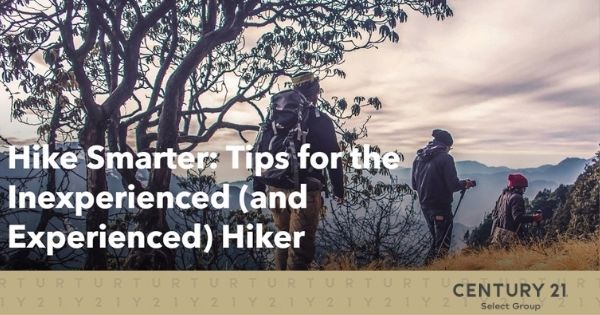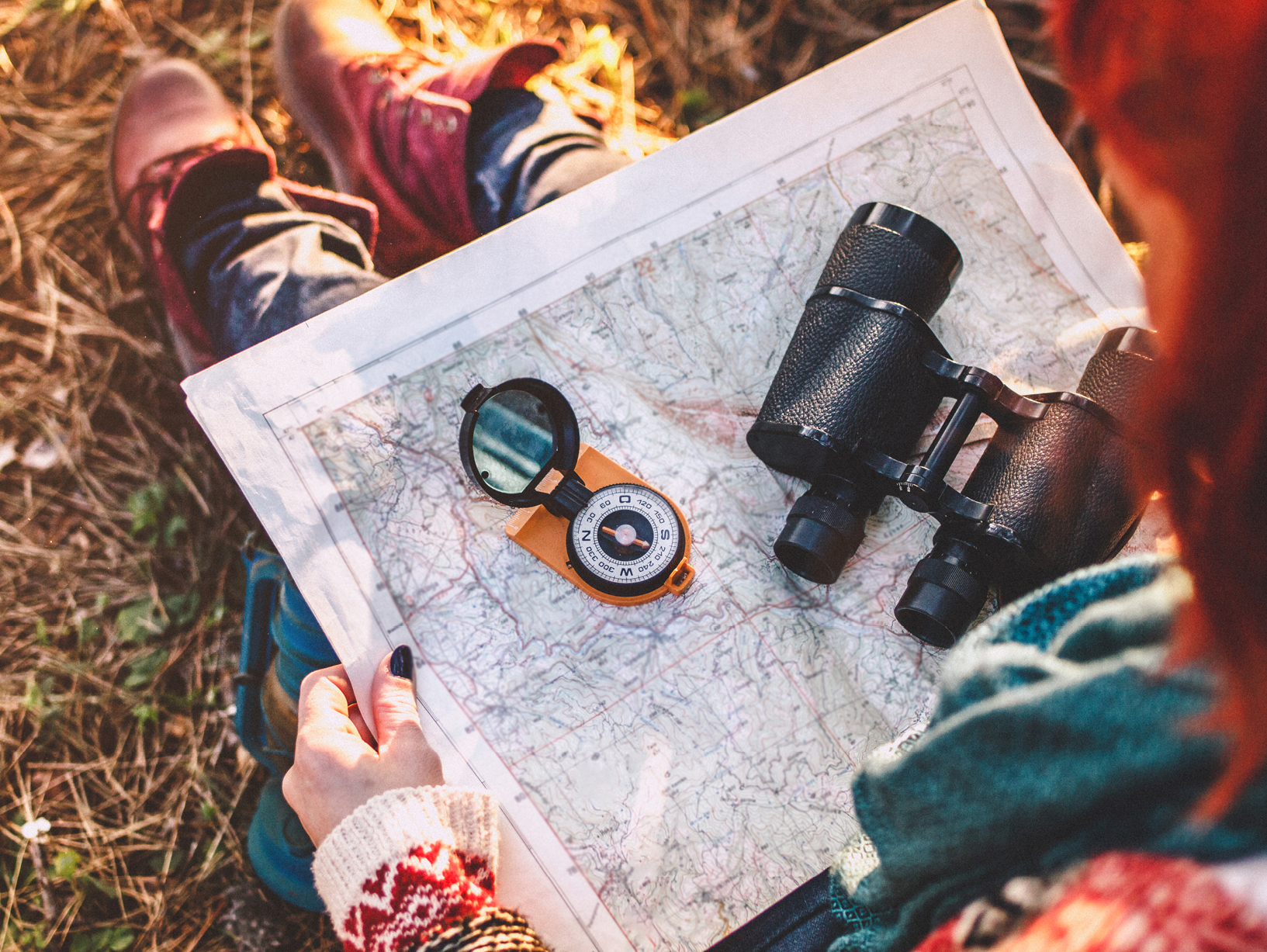Hike Smarter: Tips for the Inexperienced (and Experienced) Hiker
We’ve all seen them on Facebook—majestic photos of friends and family, their faces flushed with a healthy glow, at the top of what appears to be a mountain peak with a spectacular view. Pictures like this make the activity of hiking seem as simple as an afternoon stroll in the park. And while hiking is an excellent form of exercise and should be a highly enjoyable adventure, it’s not an activity to jump into blindly.

If you’re curious about the benefits that hiking provides and how you can get started, it’s the perfect time. With the tips and tricks in this post, you’ll be more than ready to hit the trail!
Hike for Your Health
Cardio
Whether you’re hiking a beginner’s trail or something more challenging, walking up an incline is guaranteed to raise your heart rate. Try to keep a moderate pace throughout for steady cardiovascular exercise.
Stronger bones
As we age, our bone density decreases, leaving us more prone to injury. Over time, hiking and walking can slow calcium loss and help improve bone health.
Stress reduction

Walking can help reduce built-up adrenaline in the body. Exercise is also an endorphin-producing activity, which can help you feel more at ease.
Strengthened core
A strong core is important for supporting your body through many daily activities. The balance required to hike on uneven surfaces helps engage your core muscles in ways that other exercises can’t. Additionally, hiking poles or a walking stick can help with balance and relieve pressure on joints.
Burned calories
If you’re looking to burn calories, hiking is a great way to do it. A brisk hike (at a rate of about 2.5 miles per hour) can burn between 200 and 250 calories in sixty minutes. You may even burn more calories, depending on factors like your body type, the difficulty of the hike, and your pace.
Your Personal Packing Guide
Day hiking
Even though you may only be gone for a few hours on a day hike, it’s still important to be prepared for the unexpected. Below are a list of items you should consider bringing along, plus where you can find them:

- Backpack
- Moisture-wicking clothing/socks
- Proper hiking footwear
- Snacks (high protein)
- Water (half a liter per person, per hour)
- Navigation tools (map, compass, personal GPS)
- First-aid supplies
- Knife/multipurpose tool
Overnight hiking

In addition to bringing the same items you would on a day hike, longer trips naturally require more gear. This list of essentials can be adjusted accordingly depending on where you’re hiking and the length of your trip.
- Backpack
- Rain gear, moisture-wicking clothing/socks
- Proper hiking footwear
- Tent and sleeping bag
- Stove and fuel, eating utensils
- Food and high-protein snacks
- Personal hygiene products
- Water/portable filter
- Navigation tools (map, compass, personal GPS)
- First-aid supplies
- Knife/multipurpose tool
Off You Go
With your health goals in mind and a backpack full of supplies, it’s finally time to embark on your hike—but not before you know where you’re actually going.
There’s a gorgeous hike in every part of the US calling your name. Simply find your region in the list below and get out there!
Northeast
- Bear Meadows Natural Area, PA (easy): This over-800-acre area contains a bog and trails, including a beginner-friendly loop that’s just over three miles.
- Batona Trail to Apple Pie Hill, NJ (moderate): The highest point in the Pinelands, Apple Hill is just over eight miles from the Carranza Memorial on the Batona Trail.
- Mount Marcy, NY (difficult): Climbing the highest mountain in the Adirondacks won’t be easy, but it will be a lot of fun, and there are truly spectacular views at the 5,344-foot peak.
South
- Cascades National Recreation Trail, VA (easy): This four-mile loop trail features scenic views and leads to Cascade Falls, a 66-foot waterfall.
- Long Pine Key Nature Trails, FL (moderate): Animal lovers are sure to enjoy these 22 miles of trails through parts of Everglades National Park, where you can spot wildlife such as bobcats and black bears.
- Mount Cammerer, NC/TN (difficult): This eleven-mile round-trip hike to Mount Cammerer goes through Great Smoky Mountains National Park and is one of the hardest in the region, but it’s well worth it for the incredible views.
Midwest
- Custer State Park, SD (easy-difficult): There are a number of different trails within this 71,000-acre park—all offer incredible terrains to explore, including canyons, prairies, and streams.
- Indiana Dunes State Park Trails, IN (moderate): This park offers up numerous different trails, most at moderate difficulty—and the views of Lake Michigan and the relaxing beaches are well worth a visit in the warmer months.
- Ridge Runner Trail, MO (moderate): There are two six-mile loops and a twenty-one-mile loop within this beautiful recreational area, providing a glimpse of the Ozarks’ famous limestone topography.
Southwest
- Lower Calf Creek Falls, UT (moderate): This six-mile round-trip hike leads to the lower falls, and is perfect for those looking for a relatively tame trek into the picturesque Escalante Canyons.
- Kasha-Katuwe Tent Rocks National Monument, NM (moderate): Incredible geological formations left behind from volcanic eruptions are just some of the sights to see throughout the area.
- North Kaibab Trail, AZ (difficult): If you start at the North Kaibab trailhead and finish your hike at the Bright Angel Campground, you’ll travel through fourteen miles of varying ecosystems.
Pacific/West
- Tall Trees Grove Trail, CA (moderate): If it’s towering redwoods you’re looking for on your trip to California, look no further than this four-mile round-trip hike that has views of some of the biggest in the state.
- Norway Pass, Mount Saint Helens, WA (moderate): This trail offers an incredible look at the effects of the 1980 eruption, as well as views of the area’s other famous peaks—Mount Rainier, Mount Adams, and Mount Hood.
- Hoh River Trail, WA (difficult): Yes, there are rainforests in the United States, and, yes, they’re beautiful! This nearly 18-mile trail is challenging, but well worth it for the area’s giant trees and animal life.





